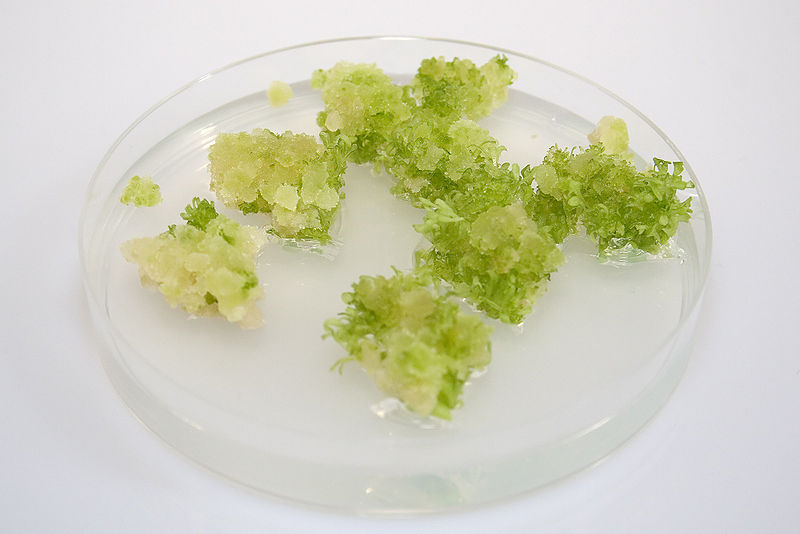Difference Between Organogenesis and Somatic Embryogenesis
Key Difference – Organogenesis vs Somatic Embryogenesis
Embryogenesis and organogenesis are two important processes in the development of an organism. Embryogenesis is the process that forms an embryo from a zygote developed from the syngamy. Organogenesis is the process that develops all the tissues and organs of the organism from three germ layers of the embryo. Somatic embryogenesis is an artificial process that forms an embryo from somatic cells of the plants. The key difference between organogenesis and somatic embryogenesis is that organogenesis is the formation of organs from embryo while somatic embryogenesis is the artificial formation of an embryo from somatic cells.
CONTENTS
1. Overview and Key Difference
2. What is Organogenesis
3. What is Somatic Embryogenesis
4. Side by Side Comparison – Organogenesis vs Somatic Embryogenesis in Tabular Form
5. Summary
What is Organogenesis?
Organogenesis is the process where internal organs of an organism are developed from the three germ layers named ectoderm, endoderm, and mesoderm of the developing embryo. Once the fertilization is completed, the zygote develops into the blastocyst and then to gastrula. Gastrulation process develops three germ layers. Hence blastula has three germ layers called ectoderm, endoderm and mesoderm. During the organogenesis, these three germ layers differentiate or specialize into various types of tissues or organs in the body. Organogenesis starts at the 3rd to 8th week of utero of humans.

Figure 01: Organogenesis
Cells of the ectoderm differentiate into cells of the outer portion of the body, including the skin or the integumentary system. Ectoderm differentiates into nervous system, sensory system, epithelium of the mouth, anus, pituitary and pineal gland, adrenal medusa, and tooth enamel. Mesoderm germ layer differentiates into all the muscle cells, cardiovascular system, skeletal system (bone and cartilage), lymphatic system, excretory and reproductive systems, adrenal cortex and dermis of the skin. Endoderm is the inner layer which differentiates into the epithelium of digestive tract, accessory organs of the digestive system such as liver, pancreatic system, epithelium of lungs, bladder, urethra, reproductive ducts, thyroid and parathyroid glands and thymus gland.
What is Somatic Embryogenesis?
Embryogenesis is the development of an embryo as a result of the fusion of two gametes. Syngamy results in a 2n cell called zygote. The zygote divides by mitosis and becomes a mature cell mass called embryo. The embryo develops into a mature organism. This is the normal process of embryogenesis or the zygotic embryogenesis. However, somatic cells are also used to develop an embryo. These somatic cells are not haploid cells as gametes. They are 2n normal body cells.
There are three main steps in somatic embryogenesis named induction, maturation, and development an embryo. A single somatic cell can be induced to become mature. Then it will develop into an embryo. Induction can be done by supplying nutrients and plant hormones. The plant hormone auxin is used in the early stage of somatic embryogenesis. Once the auxin is applied, cells will start to grow and divide rapidly. After that, the second hormone gibberellin is supplied. Then cells differentiate into an undifferentiated cell mass called callus. Callus has the capability to mature into a plant. Hence, it is transferred into a fresh nutrient medium to develop into an embryo. Embryo development has different stages such as globular, heart shaped, and small plant. Somatic embryogenesis can be easily applied to plant cells since they are totipotent. If necessary nutrients, hormones and growth promoters are provided, a single plant cell can differentiate into a mature plant. The main advantage of somatic embryogenesis in plants is that when the plant is infected, a mature plant can be made from a single unaffected cell using this process. Artificial seed can also be prepared by somatic embryogenesis. The disadvantage of this process is that it cannot be applied to all the plants. It is limited for certain plant species. It is also a time-consuming process and requires expertise.

Figure 02: Callus formed during somatic embryogenesis
There are two forms of somatic embryogenesis named direct and indirect. Direct somatic embryogenesis does not produce a callus. However, in indirect somatic embryogenesis, a callus is formed.
What is the Difference Between Organogenesis and Somatic Embryogenesis?
Organogenesis vs Somatic Embryogenesis | |
| Organogenesis is the formation and development of an organism’s organs from embryonic cells. | Somatic embryogenesis is the formation of an embryo from a single or group of somatic cells artificially. |
| Nature | |
| Organogenesis is a more or less natural process. | Somatic Embryogenesis is an artificial process. |
| Occurrence | |
| Organogenesis is seen in plants as well as animals. | Somatic Embryogenesis is seen in plants. |
Summary – Organogenesis vs Somatic Embryogenesis
Embryo is formed as a result of fertilization. Embryo differentiates and matures into a complete organism. All the tissues and organs are formed from the embryo. This process is known as organogenesis. Three germ layers collectively make the entire organ or the tissue system of the body. Usually, the embryo is developed from the fusion of two haploid (n) cells. In certain plants, embryos can be artificially developed from somatic cells without the union of two gametes. The development of an embryo from a somatic cell or group of somatic cells artificially is known as somatic embryogenesis. This is the main difference between organogenesis and somatic embryogenesis.
Download PDF Version of Organogenesis vs Somatic Embryogenesis
You can download PDF version of this article and use it for offline purposes as per citation notes. Please download PDF version here Difference Between Organogenesis and Somatic Embryogenesis.
Reference:
1. “Organogenesis – Boundless Open Textbook.” Boundless. Boundless, 08 Aug. 2016. Web. Available here. 25 June 2017.
2. “Somatic Embryogenesis: Meaning, History, Principles, Protocols and Importance.” Biology Discussion. N.p., 26 Oct. 2015. Web. Available here. 25 June 2017.
Image Courtesy:
1. “Germ layers” By CNX – (CC BY-SA 3.0) via Commons Wikimedia
2. “Callus1” By Igge – Own work (CC BY-SA 3.0) via Commons Wikimedia
ncG1vNJzZmivp6x7pbXFn5yrnZ6YsqOx07CcnqZemLyue8OinZ%2Bdopq7pLGMm5ytr5Wau2670aCYp6eXmrumv8isZJqmlGLDtHnSqKSarJmYeqa5wauwqJ%2BVo7K0tdJo